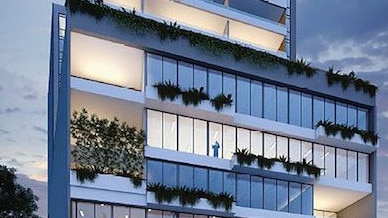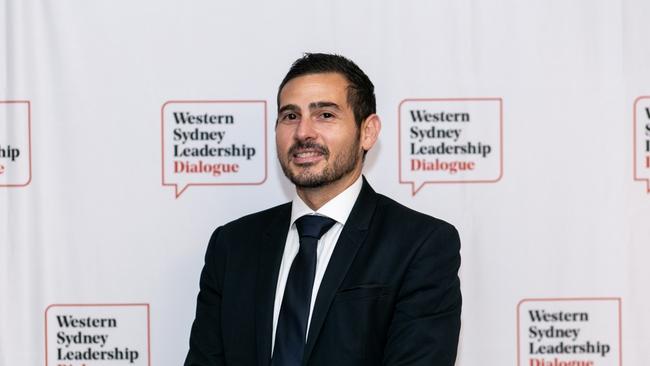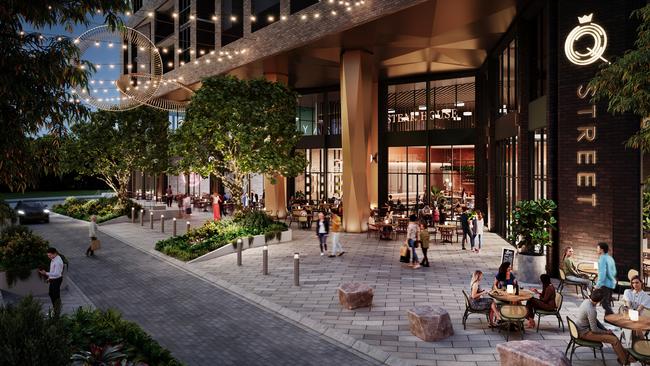Future Cities Campbelltown Forum: leaders, experts discuss housing, transport, jobs, resilience
Inside the next two decades, Campbelltown’s population is expected to welcome about 100,000 new residents. So, what does the city need? That’s the question a think tank is set to answer.

Macarthur
Don't miss out on the headlines from Macarthur. Followed categories will be added to My News.
City leaders, experts and politicians took a deep dive into what a bustling southwest Sydney hub needs for a bright future.
On Friday. hundreds gathered at the Campbelltown Catholic Club for the Future Cities Campbelltown event to discuss housing, transport and jobs.
Planning Minister Paul Scully delivered a keynote address where he spoke of the “tensions” that had plagued planning departments in recent years.
“As a first step, we do need to get development applications moving … across NSW, there is a shortage of planners,” he said.
To facilitate that, Mr Scully said 64 regional and rural NSW councils would get $25,000 each to pay the next generation of young planning officers under The Strong Start Cadetship program.

In a panel based on “Connecting Campbelltown”, Transport NSW executive director of planning for places Matthew McKibbin said a business case for a line from Bankstown to Glenfield via Liverpool.
A route from the Western Sydney Airport to Macarthur is also being explored.
However, Campbelltown mayor George Greiss pointed out that a metro line still would not allow for a “30-minute city”.
He said residents would need to drive to the metro line, park and then get on the line, and added a “rapid bus is a wonderful idea” to help address this.
Campbelltown Hospital general manager Grant Isedale said the lack of public transport impacted health workers in a “24-hour” industry.
“In terms of accessibility for patients … it‘s extremely challenging. We are not well connected to public transport,” he said. “We need to be accessible, and part of that is us working towards more integrated health hubs in the community … provided more locally to them … at the moment, that is quite limited.”

Committee for Sydney CEO Eamon Waterford said Campbelltown was one of the fastest-growing regions in the city.
“It‘s at the forefront of why we are trying to do in with changing the shape of Sydney,” he said.
“What that means for Campbelltown is how do we make it a place that is great to live in but also where there are amazing job opportunities.”

In a panel on future workplaces, Superior Training Centre general manager Robert Pasonson at Ingleburn said there needed to be a push to “vocational pathways” after school.
“The challenge we have is attracting people to the trades … and the difficulty of obtaining an apprenticeship,” he said.
“We have moved away from what we consider these trades and into unis, and we need to move back …[it‘s about] bringing back vocational aspects.”
Why Campbelltown’s housing needs to ‘go up, not out’
A solution to the dire realities of the housing affordability crisis hurting families in Campbelltown could be focusing on a high-rise future, an expert has touted.
At the Future Cities Campbelltown Forum, taking place today, leaders, experts and community figures will sit down to discuss the city’s future.
The southwest Sydney hub, home to almost 200,000 people, is buckling more than most under the rising cost of living pressures, with nearly 11,500 households experiencing mortgage stress in the 2560 postcode, which includes Campbelltown, in the last 12 months.

Western Sydney Leadership Dialogue executive director Adam Leto said “we need to be going up, not out” and called for future housing to be concentrated in the centre of Campbelltown.
“With all the work and new developments, like the Billabong Parklands, that are occurring in and around the CBD, all the effort and investment that’s going into creating new, safe, activated, public and green spaces – it has the lifestyle and amenity that will be attractive to residents,” he said.
“The green spaces on the fringes are the lungs of the city. The last thing you want to be doing is building more homes in these areas, especially when they’re isolated from jobs, services, public transport and amenity.”

The Future Campbelltown report released on Friday reveals apartments comprise only seven per cent of homes in the Campbelltown area. But that is starting to change as developers look to the sky.
Construction has started on Eight Dumaresq Street, set to be a seven-storey building with 58 apartments. Meanwhile, ALAND Development has a bold plan for Queen St.
If approved, it would include 558 residential apartments plus community facilities and restaurants across five buildings standing up to 15 storeys tall.
ALAND head of development Ryan Lane said high-density housing was critical to meet the demand of the 530,000 people expected to live in the Macarthur region in the next 25 years.
“Without high-density housing, around 20,000ha of land for single-detached dwellings would be required to accommodate this growth, which unfortunately isn’t viable,” he said.

“We believe that high-rise apartments are the most affordable way to deliver housing in the Sydney market.
“With an increase in construction costs for stand-alone houses, purchasers of high-rise housing benefit from the cost efficiency and economies of scale at which a developer can construct.”
Ruse resident Peter Berbari bought his home for about $112,000 in the late 1990s. Then, in the early 2000s, he bought a second property for about $260,000 in Campbelltown, which he now rents.
Despite the cost of living challenges, Mr Berbari said he considered himself one of the “lucky ones” despite concerns about the financial future of his teenage children as “everything seems to be going up except for wages”.
He said his home repayments were low, but the interest rates increased.
“I am managing, but it is tough,” he said. “For example, I was paying $1400 as a repayment for my rental property, and then it went up by almost $1000.”




